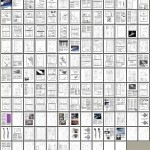Some more stuff that will either get sold to all y’all, or put on eBay. If you want one or more of these, please say so in the comments. The books will ship in the US via USPS Media Mail for $3 each, or $5 for 2 or more. Other shipping options (including foreign) available.
1) First edition hardback of Robert Heinlein’s “Rocketship Galileo.” Illustrated, in fairly good condition, but no dust jacket. $25 + postage. Purchased.
2) First edition of Hank Searls’ novel “The Pilgrim Project.” In good shape with dust jacket. Based on a Bell Aerospace concept for a one-way mission to the moon, and served as the basis for the movie “Countdown.” $5 + postage.Purchased.
3) First edition of “Close Encounters of the Third Kind” by Steven Spielberg. In good shape with dust jacket. $5 + postage
4) “German Secret Weapons Blueprint for Mars” by Brian Ford. One of the first books that helped spur off the craze for “Luftwaffe 1946” and similar popular interest in advanced and wacky WWII German weapons. $4 + postage
5) “Rocket Fighter” by William Green. Paperback about the development of the Messerschmit Me 163. $4 + postage.
6) Rocket dirt. Sure, why not. This is a 2 ounce glass vial filled with some of the dirt that fell from the sky following the ATK test of a five-segment modified Shuttle solid rocket booster for the now-cancelled Ares rockets, back in August of 2010. I collected a handful of the stuff on the day it fell, and another handful on the next day. They were put in separate ziplock bags. The second-day-collected dirt was and is substantially lighter in color than the first-day-collected dirt, which I’m guessing is due to outgassing or evaporation of… something. In any event, it’s kinda strange stuff, and it’s not like they’re making more of it… $10 plus postage.
























